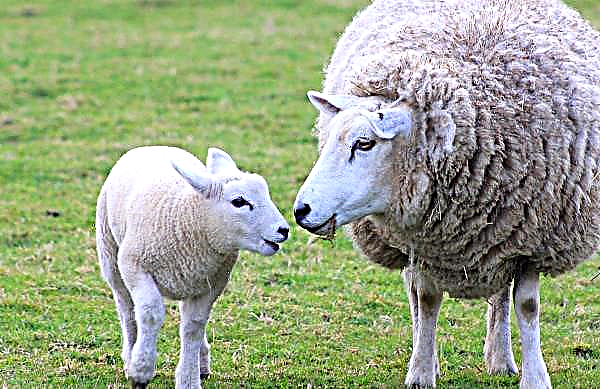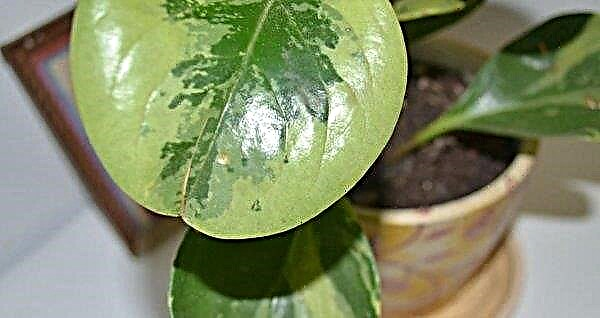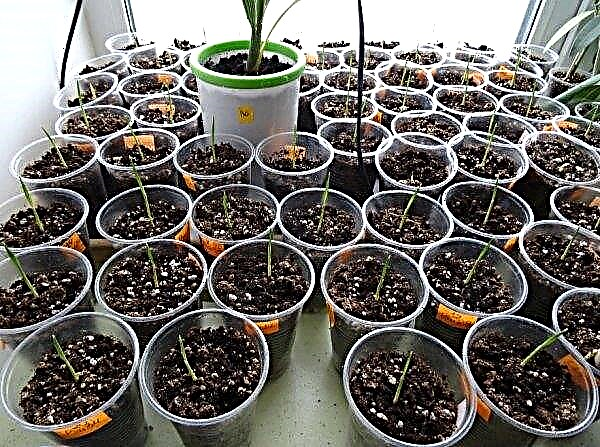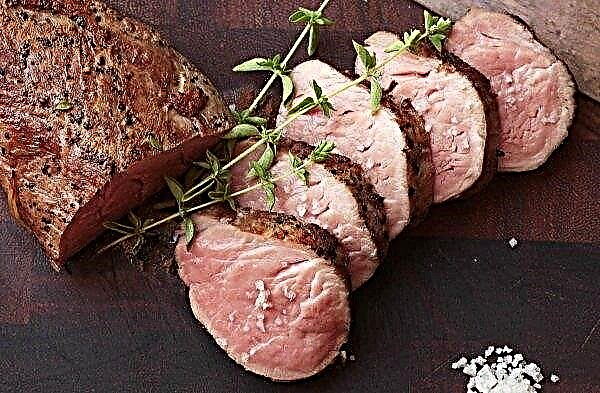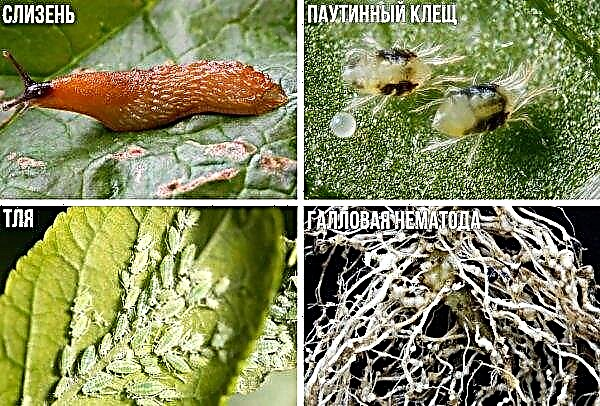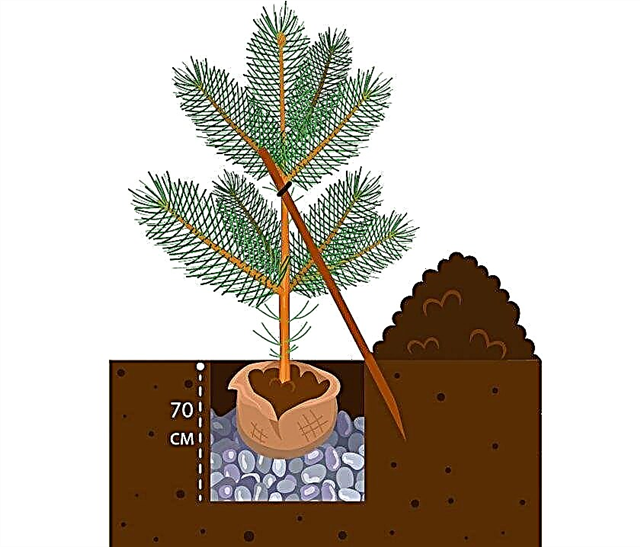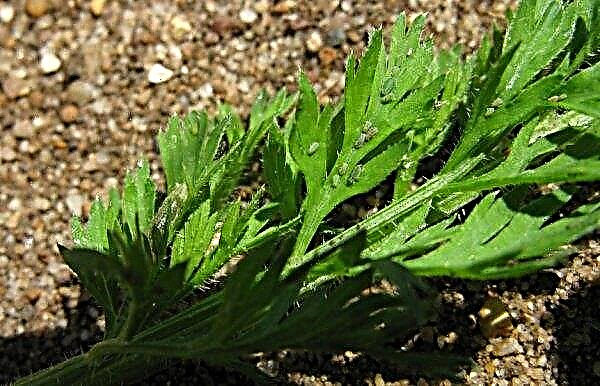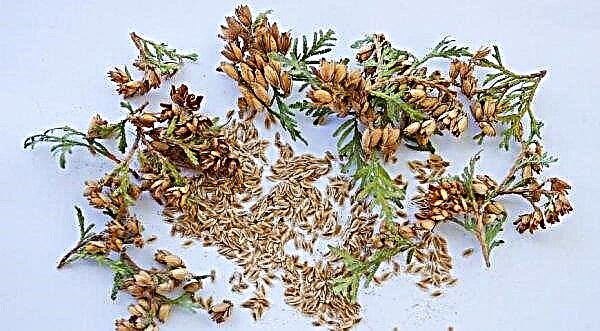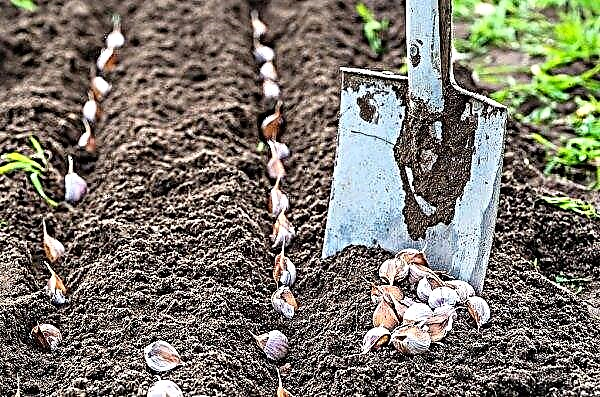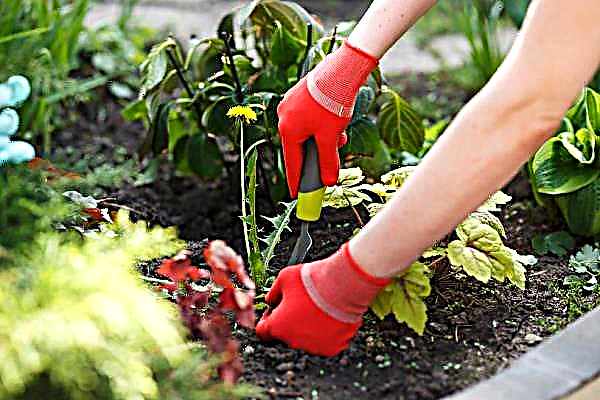The flower growers and florists who grow periwinkle agree in one opinion - the plant is so unpretentious and hardy that caring for it is more like a pleasant pastime than hard work. The article will tell about the periwinkle of the large Variegat, about its agricultural technique and application in garden design.
Botanical Description
Large periwinkle (lat.Vínca major) is a wonderful motley plant that beautifully fills and covers growth zones, adding interesting color combinations to the landscape, is a perennial evergreen shrub. Belongs to the Kutrov family (Apocynaceae). Rod - Periwinkle (lat. Vinca) - translated from Latin means "to bind", "to lash". Type view Vinca major - Periwinkle large. Form garden - variegated (Vinca major f. Variegata). Another common name is spotted periwinkle.
The term variegata (variegata - from the Italian "motley") is used to refer to plants with multi-colored leafy colors. In Ukrainian, the name of a flower consists of two words: “barva” - paint, “vinok” - a woven wreath or a flower garland.
Botanical description and characteristics:
- the rhizome is thin, fibrous, with a shallow, horizontally located branching system at a depth of 10-15 cm;
- knotty shoots;
- flower-bearing stalk bare or with sparse villi, erect, 30–45 cm tall in the wild, with cultivation 60–70 cm;
- vegetative stems spread, up to 1.5 m, rooting runs along the entire length in nodes, can be grassy or woody;
- leafy blades leathery, located on hair petioles 1–2 cm long, opposite, alternating from above, 3–9 cm long, 2–6 cm wide, almost rounded at the base of stems and lanceolate at apex, shiny, with bright veins and villi emerging on the edge. The variegated form consists in combining the color of the main dark green color with creamy white bordering and light spots. The color saturation of the border depends on the growing conditions and age of the plant;
- single flowers up to 5 cm in diameter, located on pedicels 3-5 cm long with a five-petalled corolla, which gradually expands upward. The length of the calyx around the base of the flower is 10–17 mm, the sepals are covered with hairs, and the buds are densely lilac. The aroma is mild;
- petals up to 2.5 cm long and 1.8 cm wide, obovate, widened from the center of the flower. The color is saturated, blue-lilac and violet shades prevail, brighten towards the center and acquire an almost white color at the base of the calyx;
- flowering period is long - from April to September;
- propagated by seeds, cuttings, dividing the bush, layering.
Periwinkle is frost-resistant, shade-tolerant, resistant to damage by pests and diseases. It can withstand winter temperatures up to -30 ° C. This makes it possible to grow it in regions with a cold climate, which is typical for most Russian latitudes.
Important! In winters with little snow, shelter of a periwinkle plantation is necessary.
Where is growing
Periwinkle can often be seen in the wild or in parks and gardens in different corners of the globe, but the tropics and the Mediterranean are considered its homeland.This species is found in southern Europe and North Africa, from Spain and southern France east to the Western Balkans, as well as in northeastern Turkey and the Western Caucasus, Ukraine and southern Russia. They are also found in the lower Himalayan ranges in Asia.
It prefers moist undergrowth, forests, hedges and banks along rivers at any altitudes up to 800 m above sea level. It grows well in glades open to the sun, and in shady undergrowths. Periwinkles grow in forests and thickets, on limestone rocks. They are grown as medicinal and decorative crops, including in the form of variegated and full-flowered varieties.

Landscape design application
The dense subsoil cover of vinca in May is covered with a few, but bright lavender-violet flowers among the variegated greenery of the leaves. It is grown as the lower tier of evergreen vegetation in the flowerbeds of landscape style, in rock gardens and on stone slides. The rapid spread opens up great opportunities for using the crop as a groundcover and helps the gardener to beautifully fill the empty areas of flower zones.
Variegated periwinkle is recommended for use in the most unfavorable places of the garden plot, where other less hardy ground coatings do not work. This is a useful choice with minimal maintenance for sloping terrain that is difficult to mow. It grows equally well in full sun or in deep shade. The plot with periwinkle retains decorativeness throughout the season and can be useful as a low hedge or curb.
Knowing how periwinkle flowers look, you can create colorful compositions on flower beds with other perennial flowering crops. It goes well with ferns, forget-me-nots, the host of Siebold, the lyriope is flat-leaved, the Carpathian bell, primrose, hyacinths, where all shades of the blue spectrum will be present in the flower carpet. Periwinkle is ideal for supplementing clematis, which prevents soil overheating in summer and reduces weed growth. Its shallow root does not compete with other plants for water.

It is also suitable for use as annual plants in balcony and terrace containers, in hanging planters and baskets. The plant forms small vines that will not rise upward on the surface, but can be pulled over wires or other similar fixtures and form hanging garlands of flowers and variegated leaves. The only thing that is contraindicated for him is landing in coastal zones, where he does not withstand the aggressive marine environment.
Large populations of periwinkle can be an invasive species, since their dense and overgrown stems inhibit the growth of other plants, blocking light. Propagation of a plant can occur without human help, but through discarded garden waste or plant fragments that are carried by streams of water. Periwinkle is harmful to pets.
Landing and care
Periwinkles are drought-resistant integumentary plants that grow on any type of soil if it is quickly drained and not too fertile. Hardy in stability zones up to -30 ° C, require a temperature of at least + 15 ° C for successful development. The best time for planting is early spring, when the threat of frost passes, or the end of summer, the beginning of autumn. Remove any weeds, fallen leaves and plant debris around the periwinkle. Apply a 5 cm layer of mulch around the plants, but at a distance of 5–7 cm from the stems, to prevent the development of rot.

Water the periwinkle only when the surrounding soil becomes completely dry. Put water from the garden hose directly into the soil at the base of the plant, but try not to splatter the foliage. Humidification depth - 15 cm. Water only in the early morning so that the moisture drops dry before the sun comes out. Fertilize plants once a month with a balanced composition of NPK 10:10:10 nitrogen, phosphorus, potassium water-soluble fertilizers. Mix 1 teaspoon of the fertilizer with 3 liters of water or in accordance with the instructions on the package. Apply fertilizer instead of watering.

Trim the terminal increments of the main stem of the plant 3–6 mm above the second set of leaves to stimulate lateral branching if the plant grows tall and elongated. In order for the periwinkle to be more magnificent and compact, it can be cut after mass flowering, and the resulting cuttings can be used for propagation.
Rooting new plants can be cuttings of semi-solid wood 7-12 cm long, cut from the main branches in late spring or early summer. They are planted in a landing container with a wet potted mixture, placed in a bright place, but not in direct sunlight, covered with a film. After about a month, the stalk is rooted and can be planted in open ground. Division of the bush is carried out in spring or autumn.
Important! Buy vinca seedlings only with healthy green leaves to avoid diseases in the garden. Plant plants at a distance of at least 20 cm from each other to ensure optimal air circulation through the foliage, which will prevent the development of fungal diseases.
Systematically check periwinkle leaves for aphids or ticks when watering the plant. In the morning, flush small insect populations with a jet of water under pressure. Spray heavily infected plants with an insecticide to kill the pests.

Plant a periwinkle in your garden and you will not regret it. In a short time and with minimal care, it is able to cover the free space with a motley-green floral carpet with bright patches of blue delicate flowers.

